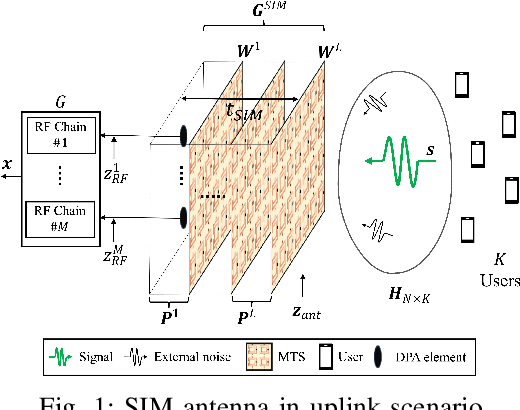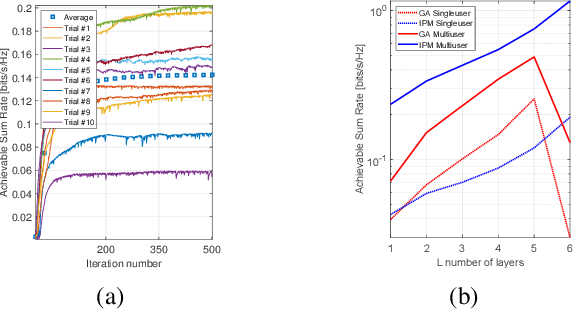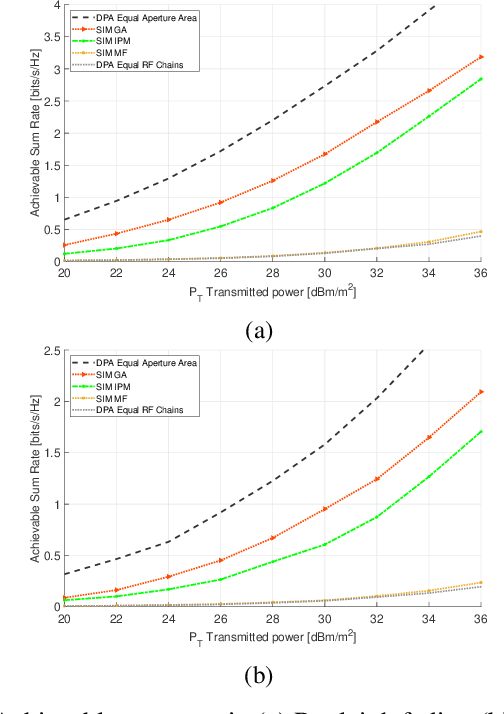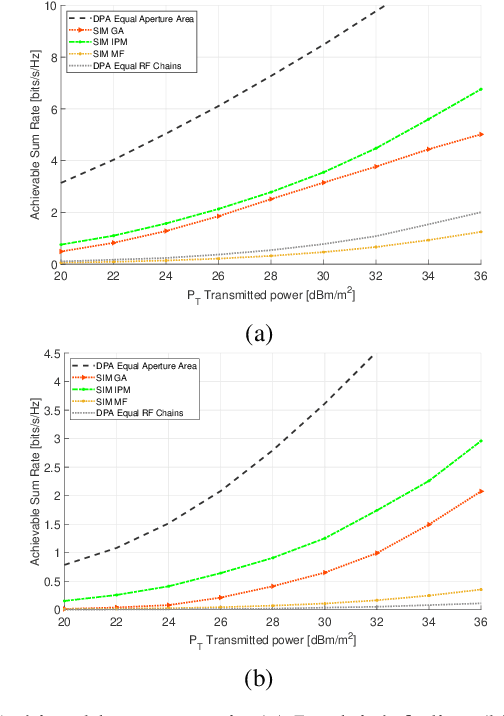Uplink Wave-Domain Combiner for Stacked Intelligent Metasurfaces Accounting for Hardware Limitations
Paper and Code
Jul 30, 2024



Using refractive metasurfaces (RMTSs) as part of the antenna design offers a promising solution to the ever-increasing demand for improved energy efficiency of wireless communications. To overcome the limitations of using one RMTS layer, a recent proposal is to cascade multiple layers, a structure called stacked intelligent metasurfaces (SIMs) where the desired precoder and combiner is formed in the wave domain. However, while proposing the antenna structure, the analysis did not account for the attendant limitations imposed by the hardware used which has a significant impact on the performance of SIMs. In this paper, we study the achievable sum-rate of a SIM antenna in an uplink wireless communication scenario accounting for hardware limitations. We begin by proposing a system model that captures both the effect of noise and hardware limitations in these systems. We then formulate the achievable sum-rate problem; since optimizing the rate is non-convex, we propose two approaches: a gradient ascent algorithm and an interior point method to find a close-to-optimum combiner. To show the efficiency of using SIMs at a basestation, we compare the achievable sum-rate with that of a digital phased array (DPA). We provide two comparisons: first, in Rayleigh fading and realistic 3GPP channels and then under a constraint of an equal number of radio frequency (RF) chains and equal physical aperture size constraint. Our results show that SIM antennas can surpass DPA performance under an equal number of RF chains but has inferior performance under equal aperture size.
 Add to Chrome
Add to Chrome Add to Firefox
Add to Firefox Add to Edge
Add to Edge